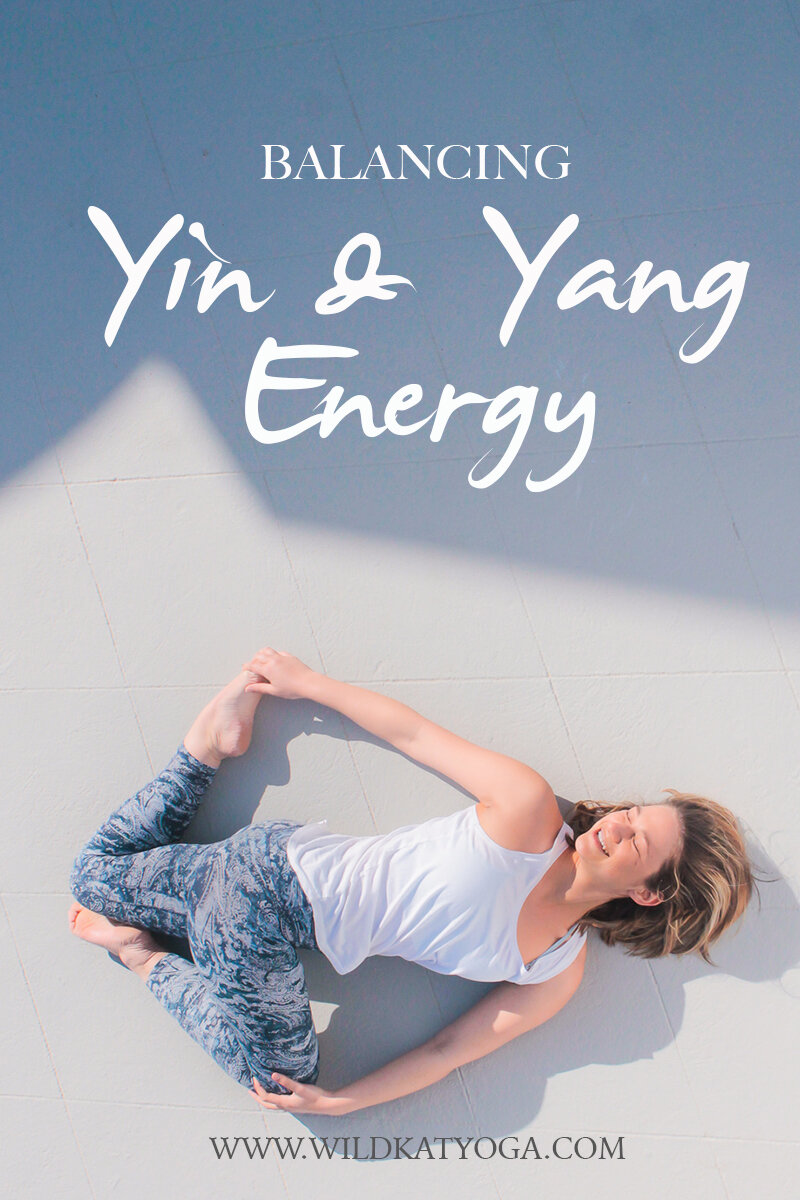Balancing Yin & Yang Energy
I so enjoyed shedding light on the link between Yin Yoga and Meridian Theory, and that blog post remains today one of my most popular. And so today I’d like to share a few of my insights into the crossover between Traditional Chinese Medicine, Yoga and Western wellness, specifically when it comes to managing our Yin and Yang energy. Because, much like Yin yoga and meridian theory, when I first started to dip my toes into Traditional Chinese Medicine (TCM) I realised, very quickly, that larger aspects of it are not actually that far removed from Yogic Principles and, in some cases, even Western Principles, it’s simply a case of wording.
This blog post contains affiliate links, which means that if you make a purchase through some of the links I provide I can earn a small commission at no cost to you. Thanks for your support!
A QUICK INTRO TO MANDUKA
I have loved Manduka for the longest time. They make excellent quality mats and apparel and they have top tier customer service with fair pricing. I always make a note to pop onto their site if I’m looking for anything yoga-related and pretty much always find what I need. You can use my code WILDKATYOGA for 10% off your next purchase.
THE LINK BETWEEN YOGA & TCM
TCM is largely focussed on the flow of qi (chi) around the body, and how/where this pools effects your health. Yang indicates large amounts of qi and Yin, small amounts. A person who practices TCM will understand that neither of these properties is inherently good or bad, but it is the balance of two that is important. They will use practices like Yin Yoga, Qi Gong and Tai Chi create energetic shifts, rebalance yin and yang energies and break up stagnant qi.
In yoga we refer to qi as “prana” - the flow of energy through the body, and a key principle of the yoga practice is to balance shtira and shuka (strength and ease, which we can also look at as Yin and Yang) in each pose. And so you can begin to understand where there is a crossover between Chinese principles and yogic principles.
Moving forward, if you’re reading this from a yogic understanding of prana then you can consider how Yin and Yang qi refers to Shtira and Shuka. If you are reading from a Western point of view you can think of Yin and Yang as Ease and Strength.
HOW DO YOU KNOW IF YIN AND YANG ARE OUT OF BALANCE?
There is a list as long as my arm of signs of deficiency but broadly speaking, those who are Yang deficient have an excess of cooler, Yin qualities. This can often be felt as actual coldness as your body slows down, and you may be more prone to illness. You may also have overall feelings of lethargy and a low sex drive.
Those who are Yin deficient, IE. have an excess of Yang energy, have a lot of heat in their body. So you may feel generally prone to sweating, especially in the night and your mind may be restless; unable to “switch off.”
FINDING BALANCE
Everything that you come into contact with will directly affect your energy levels. The people that you meet, the food you eat, the weather, the colour of the clothes you wear, spending time outside vs. inside and much more. So, if you find that you are unbalanced what is the easiest way to help you create more balance?
FOOD. Hot foods are associated with Yang energy, so those who are Yang deficient should eat spicy food or hot food like soups and stews and teas. Those who are Yin deficient should lean toward cooler foods like fruit, salads and cold drinks like ice water.
EXERCISE. Daily gentle forms of exercise are encouraged to support both yin and yang energies to help bring them into balance. This can be Yin Yoga, Walking or Swimming. Just 15 minutes a day will contribute to rebalancing your chi.
SLEEP. Restful sleep is KEY to creating balance in the body. Make sure your room is well ventilated and carries a calming energy and be sure not to eat foods that are too heavy before you sleep, incase the digestive system works late into the night and disrupts your sleep.
YIN AND YANG APPLICATIONS IN YOGA
Using this knowledge of balancing yin and yang energies the next question is, how can we balance Yin & Yang through our yoga practice? Yoga poses will each bring with them certain physical and emotional effects which we can link back to the balancing of qi. For example, child’s pose brings feelings of ease and calm and Yang personalities may struggle with this. Or Warrior poses, which built heat and activate Yang energy, will be difficult to hold (sometimes physically but often mentally) for Yin personalities; in fact you’ll often notice and almost immediate resistance from the Yin folks in the room.
A well balanced yoga class will offer both Yin and Yang poses, usually in a wave allowing for a rising and falling of energy that benefits everyone in the room. But if you are someone with an notable excess of Yang qi you may better benefit from a restorative yoga class, where the intention is on cooling and calming the body. And if you are feeling depleted of Yang energy, then a more active Vinyasa class will invite more balance.
GET PRACTISING
I created The FREE 10 day Discover Yoga Program to introduce you to a range of different style and paces of yoga classes so you can find what suits you best. This is a great place to start if you are on the journey to understanding the delicate and important balance between Yin and Yang practises.




